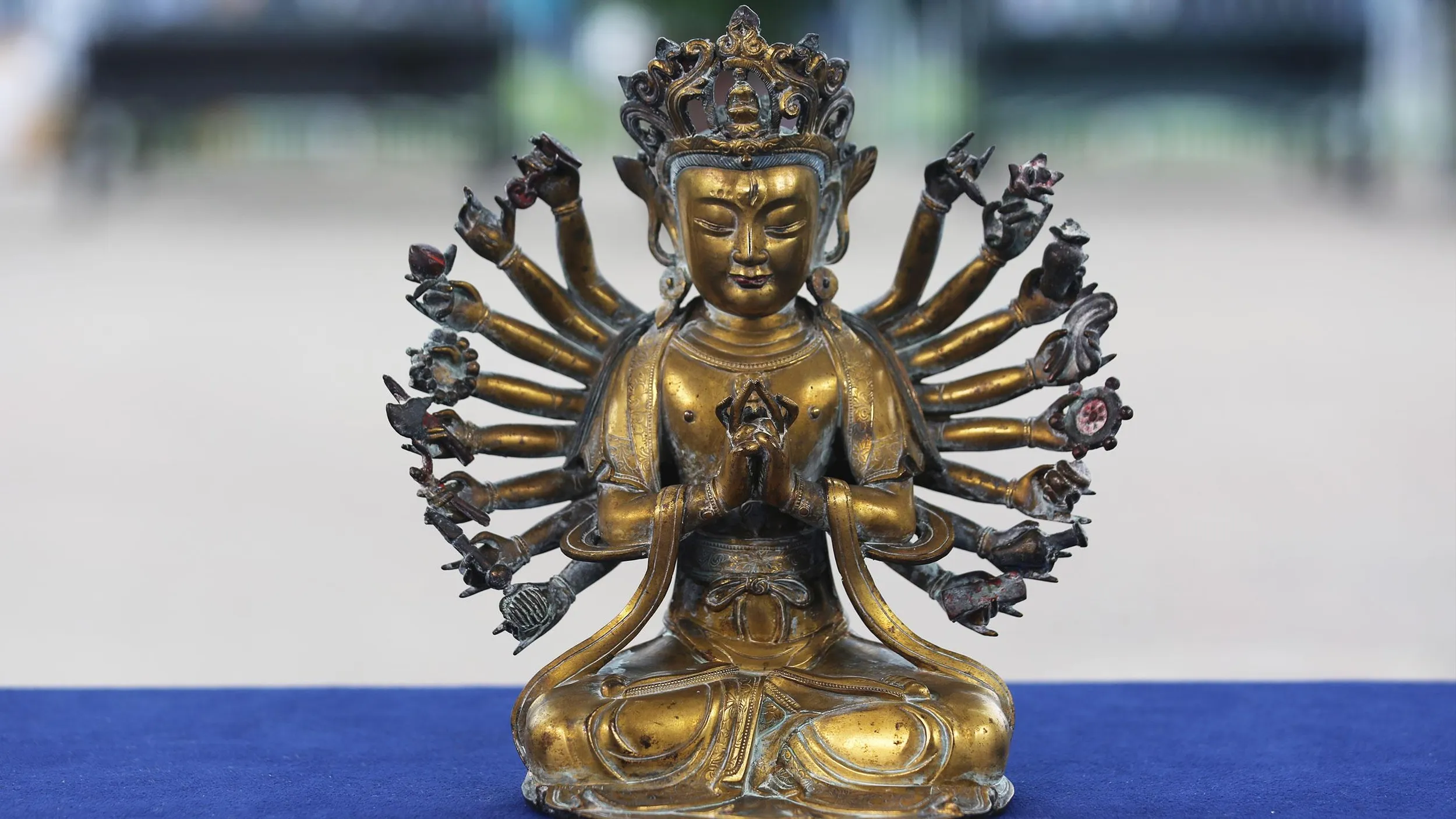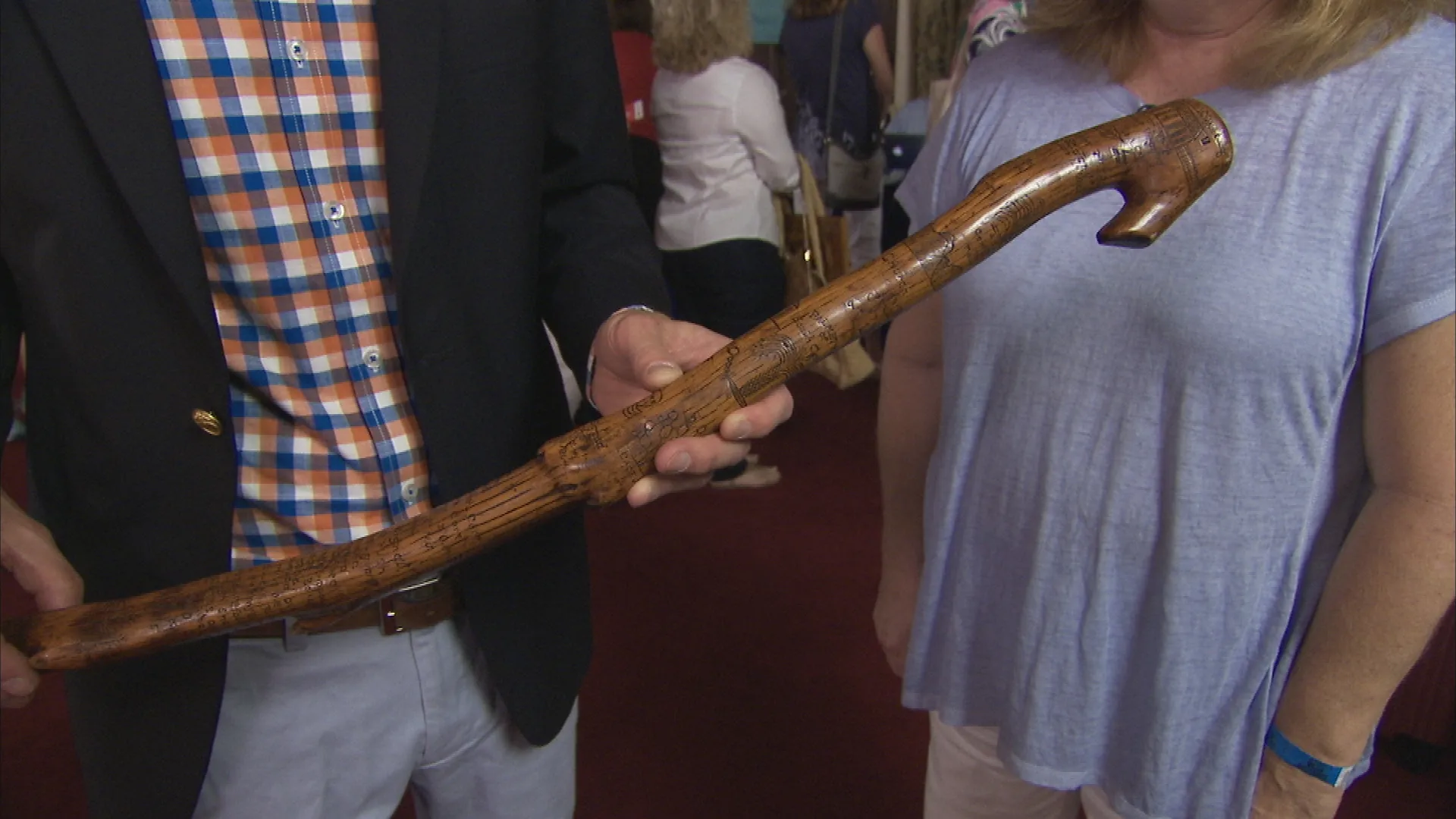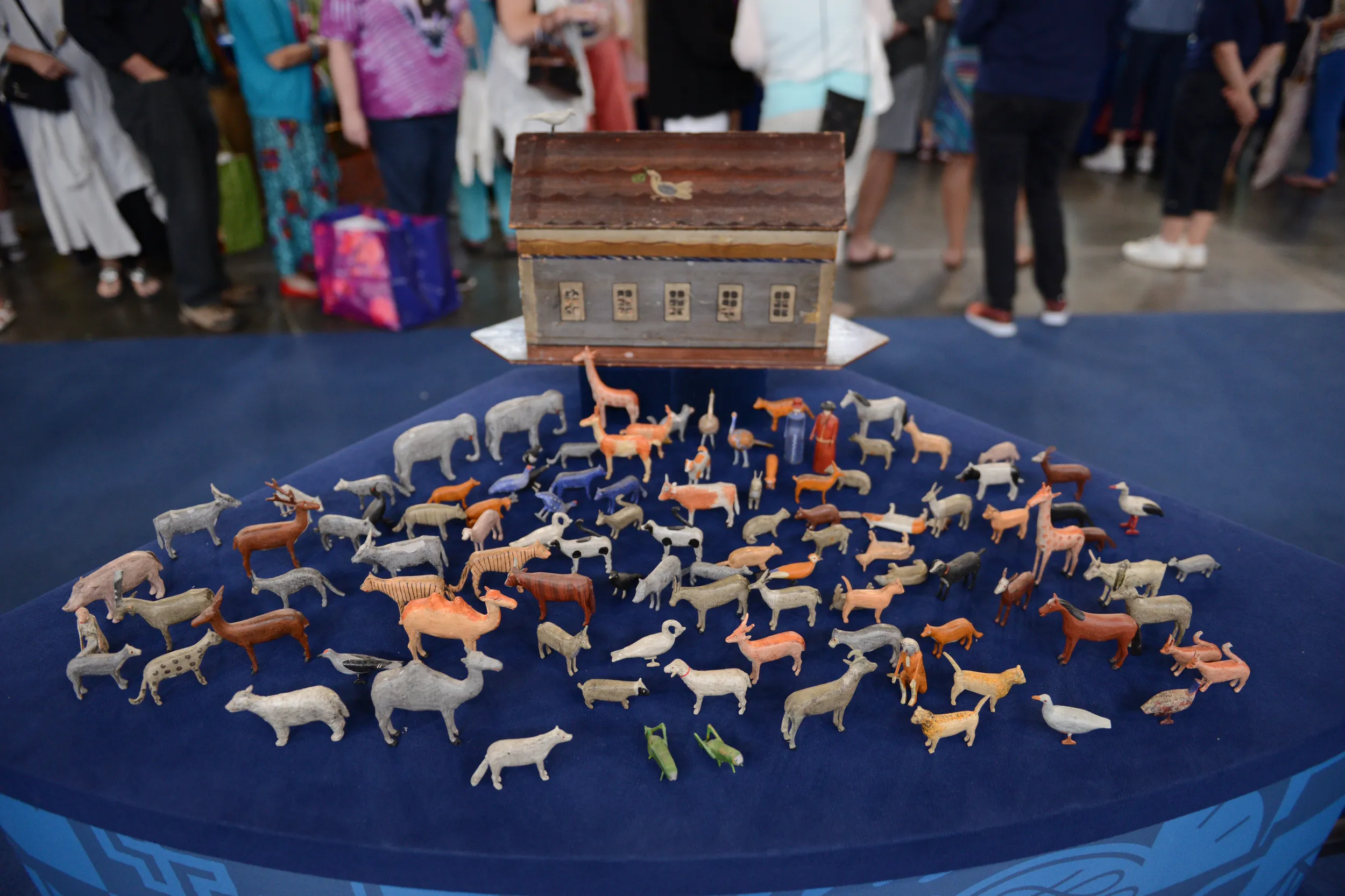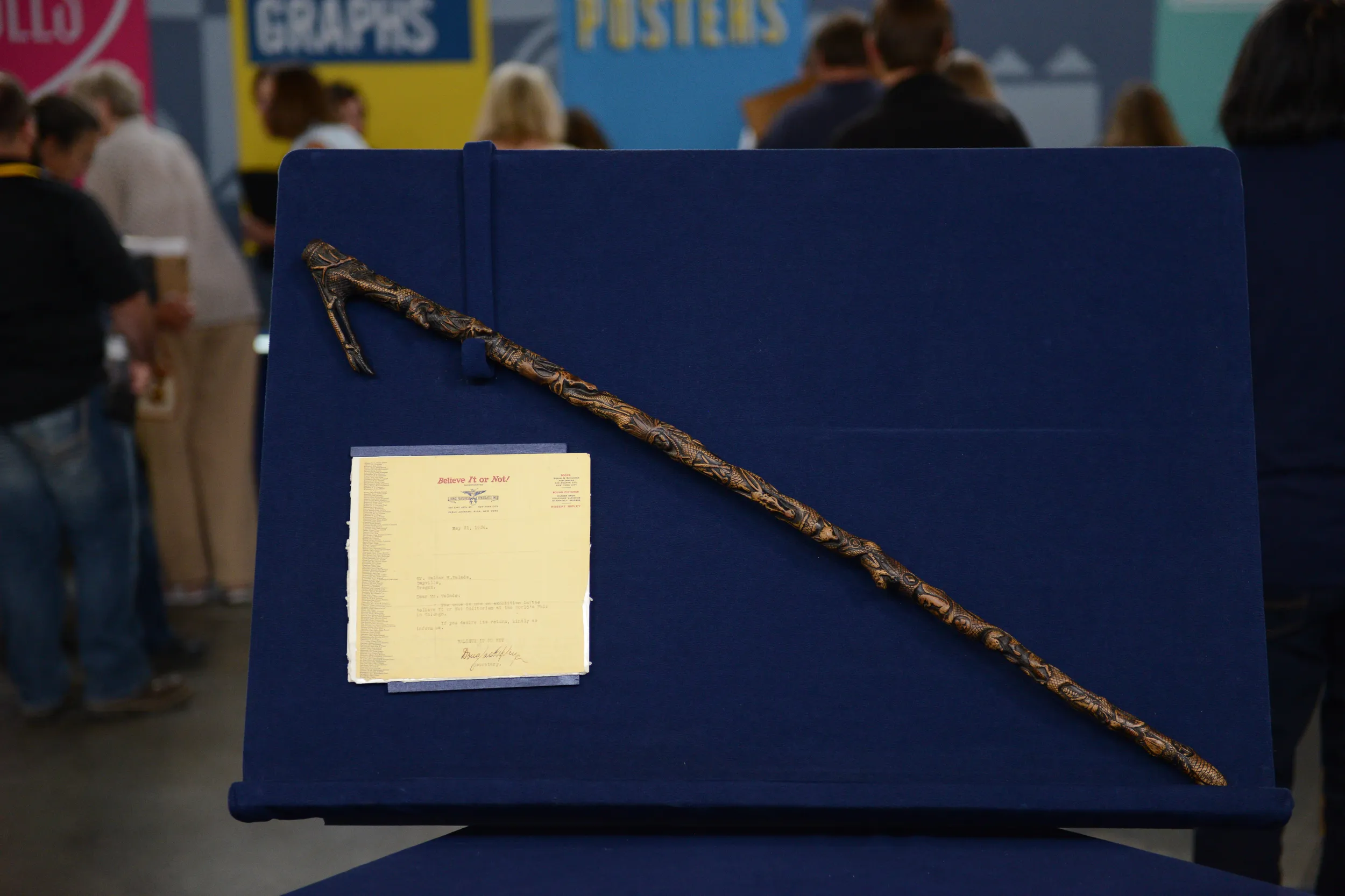GUEST: This is a functional sewing basket that was carved by my great-uncle Frederick Kaiffer in the 1860s. It won the award for the best carved work at the New York Exposition in 1865. It's been in our family for all those years. It's made out of three pieces of holly wood. Frederick Kaiffer was a noted designer. He was a wood carver who carved a lot of altars for churches. He carved the original pattern for the jockey, the cast-iron jockey. He operated out of New York City. He was married to my great-aunt, and he must have been quite a bit older than her, because he died in circa 1915, and I remember meeting her when I was a young boy in the '50s.
APPRAISER: Okay.
GUEST: So she lived for 40 or 45 years after he passed away.
APPRAISER: So what you have here is a truly spectacular tour de force of Frederick Kaiffer's work. It has this lovely plaque, likely carved by him, as well. It says, "This basket was carved, 1861, by F. Kaiffer." And as you had noted, it's made of holly wood in three pieces. And that information is on the piece of document listed closest to you. And then we also have the medal, as well, which he was awarded, which is inscribed with his name, with the date of 1865. I was able to do some research on him. And based upon New York State Assembly documents, he received a diploma award for a spectacular wood carving specimen, and that was printed in 1864. Surprisingly, as an illustrious career as he's had, we have little to no auction records or sales records for his works, and that's most likely because he chose not to sign the pieces. What's really lovely about this is, he was clearly of German descent, because this really resembles Black Forest carving, which, where we see these wonderful carved birds here over the nest with the eggs, surrounded within this wonderful floral bouquet. So you say it's an operating sewing box. Is it possible you could open it for us?
GUEST: Sure.
APPRAISER: Wow, look at that. Okay, so this is really lovely to see inside.
GUEST: And I've never seen the inside of it.
APPRAISER: Really?
GUEST: I knew it was a functional sewing basket, but I just thought it was void in there.
APPRAISER: We've got the first level here, which is this wonderful removable insert. I can see it's removable, and it's paper-lined. And then you have down to a second tier, as well, again, paper-lined and divided. And there's two screws.
GUEST: Oh, yeah.
APPRAISER: In the bottom.
GUEST: So it can't come off.
APPRAISER: So it can't come off, so it won't fall off, which is actually very good. So as you can see, lovely fitted interior for sewing. I'm going to go ahead and put this back on. And if I could ask you to very carefully put the lid back on again, that would be wonderful. Every time I look at the lid, I see something new.
GUEST: Is-- is there any finish on it, or do you think this is just raw wood?
APPRAISER: This is completely raw wood.
GUEST: Raw wood-- no finish at all.
APPRAISER: There's no finish at all. What's interesting about this is, the color hasn't changed hardly at all, because...
GUEST: I see that, yeah.
APPRAISER: Wood changes color by oxidization, by aging with the exposure to oxygen. And this is kept under a glass dome, so the color is almost as it would have been the day he carved it, which is truly wonderful. It is an exceptional piece. If you were to have this piece insured, I would recommend an insurance value of somewhere between $15,000 and $20,000.
GUEST: Okay.









